#osamu nagahama
Explore tagged Tumblr posts
Text

Osamu Nagahama: from wind (1968)
737 notes
·
View notes
Text
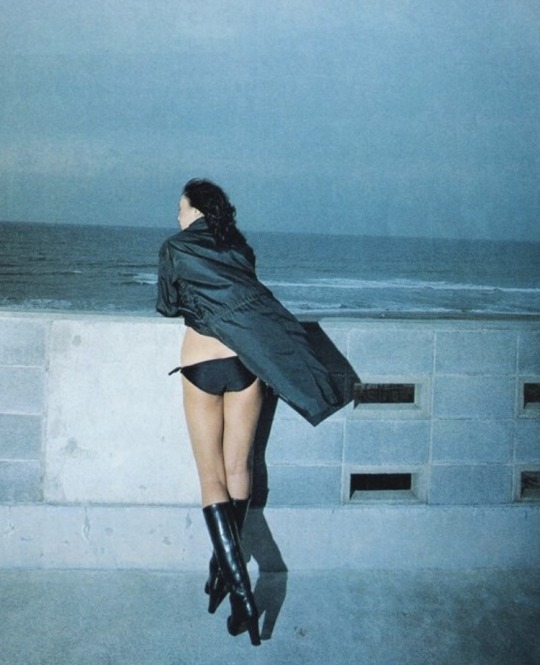
Ph. Osamu Nagahama
297 notes
·
View notes
Text

長濱治 Osamu Nagahama /1981
( via japanese.neo.noir IG)
159 notes
·
View notes
Text

カメラ毎日 1982年4月号 毎日新聞社 表紙写真=長浜治(モデル=鮎川誠・大江慎也・立花ハジメ) 特別企画:アッジェ/ユージン・スミス展
#カメラ毎日 1982年4月号#CAMERA MAINICHI#カメラ毎日#osamu nagahama#長浜治#長濱治#makoto ayukawa#鮎川誠#shinya oe#大江慎也#hajime tachibana#立花ハジメ#anamon#古本屋あなもん#あなもん#book cover
36 notes
·
View notes
Text
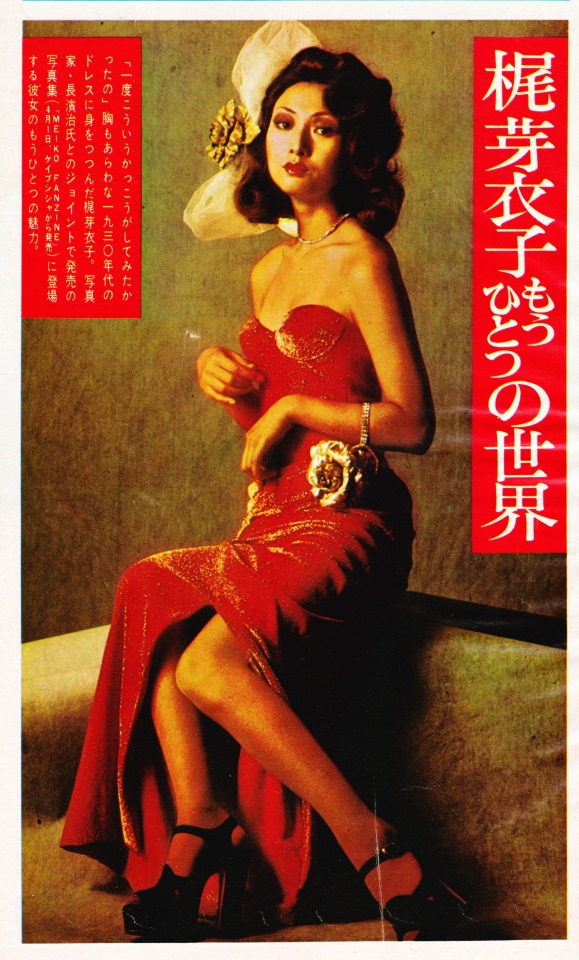
Meiko Kaji (梶芽衣子) photographed by Osamu Nagahama (長濱治) for the Meiko Fanzine, if I'm understanding the text right.
Scanned from Josei Sebun (女性セブン), April 3, 1974.
73 notes
·
View notes
Photo

Meiko Kaji from Meiko Fanzine, Osamu Nagahama
46 notes
·
View notes
Text

1 note
·
View note
Text


Lady Oscar.
9 notes
·
View notes
Text

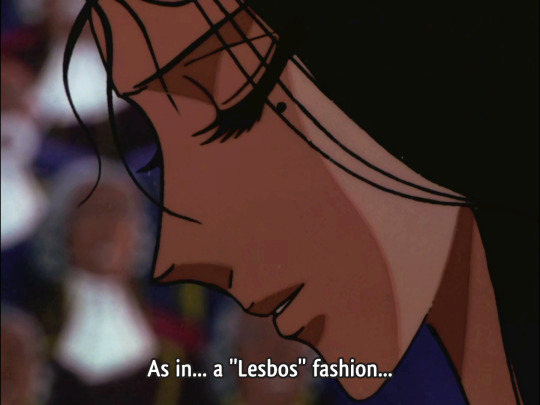
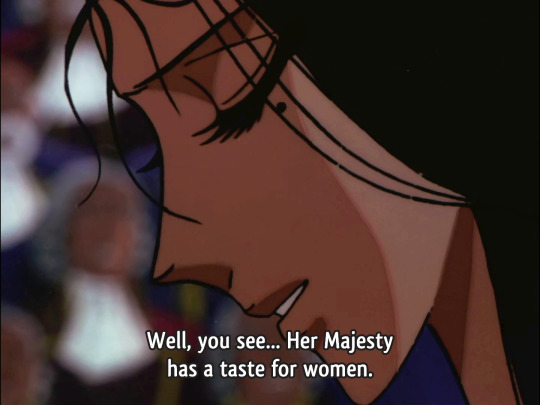
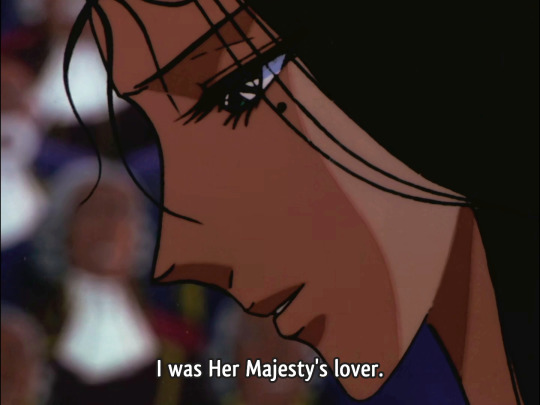
The Rose of Versailles | ベルサイユのばら (1979) dir. Tadao Nagahama & Osamu Dezaki
#queen shit tbh#versailles no bara#ベルサイユのばら#lesbian#oldanimeedit#tadao nagahama#osamu dezaki#70s#*#rose of versailles
194 notes
·
View notes
Text
太宰について
もちろん福音書にHONDA N BOXは出てこないし、太宰も出てこない。彼はなぜ、戦後「人間の失格」という事案を描かなくてはならなかったのか。いわば彼は西洋人と同じポテンシャルであるにもかかわらず、なぜパッケージとしての聖書にアウラを求め(インテリアとしての聖書)、キャラクターにかけがえのなさや有-使命性を付与したのか。彼にとっての聖書はまるで、小さなビデオレンタル屋が生んだ都市伝説のようだ。いわば彼の聖書との向き合い方は「芸能人的」なのだ。代表なくして、課税なし。イエスはキリストにあらず。あらゆる読者に殺害予告を。これは脅迫である。今の今まで本土の人々は五島列島に何を見てきたのか。見えるものと、見えないもの……。群島へ。“ここから”群島へ。私の愛は、隔たりの探検、長い行程である。「秘教……」。必要な、必要としての残酷演劇……。作者の意図を答えなさい。 それから最後に、社会主義リアリズム批評にも関わるが、太宰の業績は諸々の形而下の条件に照らし合わせて検討することがもっとも重要である。
#literature#author#osamu dazai#faith#testimony#immorality#ww2#buraiha#girlstudent#no longer human#shizu ariake#diary#shizu ariake's diary#nerima#august 8#modernity#postmodern#minority group#neru nagahama#photobook#goto islands#copying
0 notes
Text

« The Rose of Versailles was developed during a significant transitional period for shōjo manga as a medium, characterized by the emergence of stories with complex narratives focused on politics and sexuality. The series contributed significantly to the development of shōjo manga, and was one of the primary works responsible for its shift from a genre aimed at children to a genre aimed at adolescents and young adults. »
— Wikipedia
𝐚𝐧𝐢𝐦𝐞 The Rose of Versailles • ベルサイユのばら (1979)
𝐜𝐫𝐞𝐚𝐭𝐞𝐝 𝐛𝐲 Riyoko Ikeda
𝐬𝐭𝐮𝐝𝐢𝐨 Tokyo Movie Shinsha
𝐝𝐢𝐫. Tadao Nagahama, Osamu Dezaki
𝐜𝐡𝐫. 𝐝𝐞𝐬𝐢𝐠𝐧𝐞𝐫 Michi Himeno, Shingo Araki
𝘴𝘰𝘶𝘳𝘤𝘦: e01 𝘮𝘺 𝘴𝘤𝘳𝘦𝘦𝘯𝘴𝘩𝘰𝘵𝘴
6 notes
·
View notes
Text
'70s Harajuku (Part 2)
The Harajuku district in Shibuya has gained international acclaim as a hub of Tokyo's youth culture and fashion scene. Its streets are lined with cafes, boutiques, and well-known fast fashion stores, drawing a constant stream of tourists, fashionistas, and teenagers. However, before the arrival of billionaire retailers, foreigners, and media attention, this area's early inhabitants were the ones who truly shaped its unique character.
'70s Harajuku (Part 1)
There's been a few books written about Harajuku and its culture in the '70s. Famed photographer Shinpei Asai wrote "Central Apartments Monogatari" (Central Apartments Tale), published in 2002. Futoshi Kimizuka interviewed some creative professionals who had offices in the building for 2004's "Central Apartments no asobi" (Walking through Central Apartments). Yasuko Takahashi, Japan's first stylist, wrote extensively about her experience working and playing in the neighborhood during that era in "Omotesando no Yakko-san" (Yakko-san from Omotesando, 2012) and "Toki no kakeru Yakko-san" (Yakko-san Who Leapt Through Time, 2015). In 2019, Non Nakamura, who started out as Yakko-san's assistant, compiled photographs and essays from influential figures of the time in "70s Harajuku Genfuukei."
This same Non Nakamura contributed what I consider to be some of the most insightful and readily available essays on this period through her "20th Century Girl" serialization in Mononcle. These essays are accessible for free on their website (in Japanese, though Google Translate provides a decent translation). Nakamura's series chronicles the culture of the 1970s in Harajuku and the broader oshare influences of that decade.
The first essay discusses how she owes her fateful meeting with Yakko-san to rock 'n' roll. Nakamura was a teen during the folk music era when rockstars had long hair, worn-out T-shirts, and bell-bottom denim. She wasn't particularly attracted to this type of fashion, so when she first saw glamorous-looking David Bowie in a magazine, she instantly fell in love with him. Her other passion was the band Carols. She passed by a poster of them, with their regent hairstyles, motorcycles, and leather jackets, on her way to her part-time job in Shinjuku and was remarkably attracted to them. After work, she ran to the record store and bought their then-just-released first single, "Louisiana." When she got home and dropped the needle on the record, the sound of rock 'n' roll took over her body, and she was utterly fascinated with the band. Soon after, she got a boyfriend who followed the regent hairstyle/leather jacket/motorcycle trend of the time.
Nakamura hated studying and wasn't interested in school clubs and activities. She'd fulfill her curiosity about the world by reading the dressmaking magazine Fukusou and admiring the avant-garde professionals that worked in it, such as the photographers (Saku Sawatari, Daitomo Yoshida, Osamu Nagahama), the illustrators (Ayumu Ohashi, Teruhiko Yumura, Yosuke Kawamura, Osamu Harada, Tamie Okumura), the models (Risa Akigawa, Brenda, Ichizo Koizumi), and the writers (Takeshi Matsuyama and Ken Sunayama).
One day, Yasuko Takahashi, aka Yakko-san, started a serialization in Fukusou. In her inaugural essay, she wrote that if she were a teen, she'd probably be chasing her rock 'n' roll dreams and dating a rocker dude her mom disapproved of. These words resonated deeply with Nakamura, who found school tiresome, yearned for an artsy and glamorous world, adored Carol and Bowie, and was dating a delinquent high school dropout who didn't earn her mother's favor. She felt seen and understood.
In her column, Yakko-san published plenty of photos of her daily life. To Nakamura's surprise, she was friends with the guys from Carol and also worked as a stylist for David Bowie. In the 17-year-old girl's eyes, she was the most incredible woman alive.
As she recounts in her second essay, her deep relationship with the Fukuso magazine team started a few months before Yakko-san's inaugural column in the October '73 issue. One day during the spring of her senior year, she felt compelled to write a letter to the magazine professing her love for it. She dreamed of being an illustrator, so she included a bunch of her doodles. To her surprise, the editorial team called her home a few months later and invited her to their office.
After school, she changed from her uniform to her favorite clothes (which included a shirt she bought from a London import shop in the basement of Central Apartments and a gingham skirt she made inspired by MiLK) and eagerly made her way to the meeting. The editors inquired about her clothing and life, and their comment, "I sensed something in you that was not Yojohan-ish," stuck with her.
To understand the context of this comment, we must go back in time to the folk music fever of the '70s, when yojohan (4 tatamis and a mat) folk was at its peak. Yojohan referred to small rooms where impoverished university students lived, often idealized in songs about young love and melancholy that dominated the charts. Nakamura was happy with the comment because, indeed, she didn't like the poor and humid vibe of said songs. She was drawn instead to dreamy pop and rock.
The teen girl left the magazine's office that day with an invite to publish a double-spread page in the June issue, full of her illustrations and thoughts. It was quite an achievement for her.
Encouraged by this experience, she didn't hesitate to write Yakklp-san a letter. And to her astonishment, Yakko-san replied! Before she knew it, they had become penpals and engaged in lengthy phone conversations. Thus began a profound friendship between a 17-year-old high school student and a 34-year-old stylist at the pinnacle of her career.
Funnily enough, Yakko-san feared meeting Nakamura and disappointing her. To the 17-year-old, it was amusing that a grown woman who organized Japan's top designer Kansai Yamamoto's show in London Fashion Week and had the initiative to collaborate with world-famous figures such as T-Rex and David Bowie would be intimidated by her.
But, as she recounts in her third essay, they finally met. First, a quick 10-minute meeting in a Shibuya coffee shop. And then a proper encounter at the renowned Leon, where she also met other cool people she used to see in the magazines. Soon after, she became a frequent visitor to Yakko-san's small apartment in Harajuku.
Initially, she was taken aback by the apartment's minimalist and compact layout, as well as Yakko's sparse possessions. Yet, within the broader context, it made sense that a trend-savvy individual in 1973 lived this way. It was the year of the Oil Shock, the first post-war recession and frugality was in vogue. Books like "Jonathan Livingston Seagull," an anti-materialism allegory, and Alicia Bay Laurel's "Back to the Earth" became bestsellers, reflecting the shift towards a more modest lifestyle.
Amid the growing popularity of the back-to-the-land movement in the United States, minimalism and healthy living gained global momentum. It was Yakko-san who first introduced Nakamura to these ideas.
Through Yakko, Nakamura also learned about "natural food," a relatively unfamiliar concept in Japan at the time. While a foreign concept to most, natural food was all the rage in the vibrant neighborhood of Harajuku, and locals bought it from the market in the basement of the luxury Co-Op Olympia condo. Additionally, a delivery service offered pesticide-free vegetables, spearheaded by a former Leon patron who had forsaken a successful creative career to explore his passion for sustainable farming. Through these encounters, young Nakamura began to comprehend that life presented various paths, and fashion encompassed not only clothing but also a holistic lifestyle, including food and living habits.
The fourth installment focuses on Sayoko Yamaguchi, one of Japan's top models of the '70s, who had worldwide success and shared a close relationship with Yakko-san. Nakamura observed that during that era, the most prominent models were of mixed heritage (haafus), characterized by big eyes, long eyelashes, and wavy hair. Notably, Lisa Akigawa was one of the most renowned among them. In contrast, Yamaguchi stood apart with her almond-shaped eyes and black bob haircut. Her unique style served as an inspiration for many Japanese girls, fostering their self-confidence. Her signature eyeliner makeup and haircut were emulated by numerous admirers. While Yamaguchi enjoyed global fame at international fashion weeks, she became a familiar face to the Japanese public through her Shiseido commercials. She was among the numerous icons in fashion and culture closely connected to Yakko-san.

During the 1970s, Sayoko Yamaguchi was one of the faces of Shiseido cosmetics.
Another notable figure in this circle was the director Juzo Itami, whose tight relationship with Yakko-san was evident in his introduction to her first book, "Aisatsu no Nai no Nagadenwa" (Long Phone Conversation with no Greeting), published in 1976. This title offered one of the first comprehensive examinations of the "stylist" profession, which was relatively obscure in Japan then.
In the fifth essay, Nakamura writes how she found out about the profession through an article at AnAn, which briefly described a stylist as "people who lease clothes for fashion shoots, run around Harajuku with large bags, line the soles of model's shoes with duct tape, coordinate clothes, and attend shoots."
As she discovered through her work with Yakko-san, stylists do way more than that. And that was also what Itami tried to convey in the introduction to Yakko's book:
"I want to introduce my friend, Yasuko Takahashi. She is a first-class stylist. When making fashion editorials or commercials, a stylist can materialize a suitable house, the right interior design, or a place just like the one you're looking for out of thin air. At the same time, they also find props that are suitable for the location and source costumes. Depending on the situation, they will interact with the models and even advise on hair and make-up, so they must be genuinely knowledgeable. Collaborating with Yakko is, without exaggeration, a heavenly experience for me. She is a consummate professional. Once upon a time, when she couldn't find a suitable location, she wandered through town all night, shedding tears of frustration until she eventually discovered one. I mean, she's persistent. Her tenacity isn't limited to her professional life; in her case, she's unwavering in allowing her creativity to roam freely."
Yakko and Itami first met after being introduced by famed photographer Shinpei Asai, who had his office at Harajuku Central Apartments. The three of them worked together on a serialization Itami had at Shūkan Bunshun magazine in the sixties, which had Asai in charge of the photography and Takahashi doing the styling.
Takahashi was impressed by Itami's sensitivity to trends on a global scale. When she went to New York, he told her to buy a Yellow Pages-sized book, "Whole Earth Catalog," which inspired his weekly column. As covered here, "Whole Earth Catalog" was highly influential among Japanese media and creative types in the late 60s and early 70s, molding much of Japan's fashion culture.
But back to Non Nakamura's column, stylist was a novel occupation. She notes that stylists became highly sought after in the 80s, with the effects of the D.C. brand boom and the bubble economy. A diverse range of stylist roles emerged, including magazine stylists, advertising stylists, men's fashion stylists, and even specialists in props and food styling, each requiring unique skills and expertise. But back then, when Yakko-san was one of the few professionals doing this job, a stylist was in charge of everything, from the models and shooting locations to the costumes, dishes, houseplants, furniture, or anything else the shoot may need.
One day, Yakko asked Non to work as her assistant on a Noriyaki Yokosuka shoot. She promptly accepted, even though she had no idea who the photographer was. However, when she mentioned him to the boys in her design school, they were impressed and told her that he was the one who photographed Sayoko Yamaguchi's Shiseido posters, as well as doing the Parco ads. Parco, the Shibuya fashion building, had the buzziest campaigns in the country under Eiko Ishioka's art direction.
When she got to the shoot, the photographer asked her to get some poppy flowers. Faced with challenges in finding these specific flowers, Non embarked on a frantic quest, purchasing as many as she could to meet the photographer's expectations. However, to her astonishment, the photographer didn't even glance at the flowers. That's when she realized that being a stylist was a tough job.
David Bowie was the theme of two installments of the column. Yakko-san introduced him to legendary Japanese designer Kansai Yamamoto, who was behind some of his most legendary costumes, and they established a close working relationship in the 1970s. During her tenure as Yakko's assistant, Non had the opportunity to meet Bowie in a 1977 photoshoot in Harajuku. One of the photographs from that session, captured by Masayoshi Sukita, ultimately was used as the cover of Bowie's 12th studio album, "Heroes."

The cover of Bowie's 12th studio album, "Heroes," was shot in Harajuku. Yakko-san was the stylist.
She also dedicated a chapter to another one of her idols, Eikichi Yazawa, whom she met just a few weeks after Carol's farewell concert as he prepared to make his solo debut. She recounts that his charm so enchanted her that she realized she didn't actually love her boyfriend at the time, breaking up with him shortly after.
Nakamura watched Carol's final concert twice. Along with the rest of the country, she followed the telecast, aired a few days later. As she recounts, she and Yakko-san were working in Harajuku on a Saturday afternoon when the stylist took a look at her watch, said, "oh, it's starting soon," and rushed to a design office at Central Apartment that had a TV (minimalist Yakko-san didn't have one at her place).
But she also was one of the lucky few who actually were at the proper concert in Hibya Open Air, which she attended all dressed up in clothes from the trendy Creamy Soda boutique in Harajuku (the owner was notoriously close to Carol's members). Infected by the feral atmosphere, she ended up in the front row and even tried to invade the stage. She succeeded in getting her right foot in before being kicked out by the security guard. But here's a twist: the security was also a regular at Harajuku's Leon coffee shop.
In the 1970s, the hippiest motorcycling gang in Tokyo was The Cools. They were known for their cool styles, hung out with models and celebrities, and were always at Leon. Of course, like all of Japan's young bad boys, they were also big Carol fans. And they actually became close to the members. For their final show, the band wanted to mimic the Rolling Stones -- which had the Hell's Angels as security -- and they invited The Cools to escort them and guard the stage.
After Carols disbanded, the Cools were actually hired by a major record label and became a proper rock band.
In the 1970s, Harajuku remained a hidden gem, undiscovered by the masses. Yet, this small district nestled within bustling Shibuya played an integral role in the histories of the most extraordinary individuals. As the rest of the country caught on, they sought a taste of Harajuku's uniqueness, propelling it into the phenomenon it has become today.
#carol#the cools#70s japan#70s japanese music#harajuku#70s harajuku#non nakamura#sayoko yamaguchi#david bowie
13 notes
·
View notes
Text
An Abbreviated History of Mecha Addendum 1: Assemble the Forces!

Welcome to the first addendum to An Abbreviated History of Mecha! Today, we'll be looking at some of the media that came out in the 70's and before. A lot of the shows covered here are ones that were fairly big in their own right, especially when compared to the juggernauts of the era like Ultraman, Mazinger Z, and Getter Robo. What should also not surprise anyone with a lot of the shows listed here is that a bunch of the shows listed here have one Go Nagai and Dynamic Planning attached to them in some manner.
Because of course he is.
And I should note: unlike in An Abbreviated History of Mecha proper, the addendums will not be listing these entries in chronological order. This primarily because a) I need to get back into the groove of writing one-off posts (especially after The Devil That is Capitalism), and b) there are a lot of things that slipped out of the cracks, and I treasure my sanity.
Anyways, let's get down to brass tacks.
Daiku Maryu Gaiking (1976) and Gaiking: The Legend of Daiku Maryu (2005)

Daiku Maryu Gaiking (or Dino Mech Gaiking) is a 1976 giant robot series known for having plots take place in real world locations outside of Japan and also for featuring the first ever use of a carrier ship for the titular giant robot Gaiking. Gaiking is also somewhat infamous due to Toei trying their absolute hardest not to pay Go Nagai since he and Dynamic Planning created the series.
Toei would revisit Gaiking in 2005 with the release of Gaiking: the Legend of Daiku Maryu, which would feature a largely unchanged Gaiking and Daiku Maryu but feature a completely different main character.
Kotetsu Jeeg/Steel Jeeg (1975) and Kotetsushin Jeeg (2007)

Created by Go Nagai immediately following the success of Mazinger Z and Great Mazinger, Kotetsu Jeeg alongside its sibling series UFO Robot Grendizer would help to cement Nagai's legacy as one of the big mecha creators in the canon. Kotetsu Jeeg would receive a sequel in 2007, Kotetsushin Jeeg. The sequel was directed by Jun Kawagoe of Getter Robo Armageddon and Mazinkaiser SKL fame and features JAM Project performing the OP Stormbringer.
In other words, Kotetsu Jeeg beat Mazinger Z to the punch with the distant sequel. Or I guess you could say it beat Mazinger Z to the rocket punch?
Eh? Get it? No? Okay...
Planetary Robot Danguard Ace (1977)

Danguard Ace is one of the many mecha shows that came out in the wake of giants like Mazinger Z and Getter Robo. This series is noteworthy for being Leiji Matsumoto's first and only foray into the giant robot genre of mecha.
And hey, guess who's currently the owner of the Danguard Ace property?
It's Go Nagai and Dynamic Planning.
Abassador Magma (1965)

Ambassador Magma is a manga series created by Osamu Tezuka. It would also receive a tokusatsu series shortly after, with one of its big accomplishments being that it would be the first tokusatsu series aired in color. Specifically, it would beat honorary mecha show Ultraman to the punch by about six days.
Invincible Robot Trider G7 (1980)

Something to always keep in mind with the history of mecha is that Mobile Suit Gundam was not initially a hit. Invincible Robot Trider G7 serves as a good reminder of this, as it was an anime series produced by Sotsu (as in the very same Sotsu that also produced the original Gundam alongside Sunrise). Airing at around the same time as Space Runaway Ideon, Trider G7 would mark the beginning of giant robots being used in the deep recesses of space alongside Ideon.
Future Robot Daltanious (1979)

I couldn't find a good gif for Daltanious without watching the series myself, so we'll have to make do with this promotional image instead.
Future Robot Daltanious is a 1979 anime series that had Tadao Nagahama as its original director for its first couple of episodes before he left to direct the seminal Shoujo series The Rose of Versailles (a series that really should be treated as an honorary mecha series due to its influence on anime and manga as a whole). Even though he only worked on the series for about thirteen episodes and passed away before he could come back to work on it, Daltanious is still treated as one of his shows alongside Combattler V, Voltes V, and Daimos.
Daltanious is also an important series for those familiar with the Brave franchise, as Daltanious is the design inspiration for both Exkaiser and GaoGaiGar.
Super Robot Red Baron (1973) and Super Robot Mach Baron (1974)

Super Robot Red Baron would come onto the scene in 1973 as the giant robot tokusatsu shows would wane in abundance due to their expensive natures. Red Baron, and later its sequel series Mach Baron, would serve as a sort of swan song as it would also have to compete with one Mazinger Z for the hearts of children all across Japan. Giant robot tokusatsu wouldn't go away altogether though, and we'd see this with the next and arguably one of the weirdest entries both here and in the canon of comic book history.
Toei Spider-Man (1978)

In cooperation with Marvel Comics (yes really), Toei would put out their own version of Spider-Man towards the end of the 70's. Note that this is specifically in a post-Kamen Rider/Super Sentai world, so Spider-Man in this series is less "quippy teenager living up to his uncles words about great power and great responsibility" and more "the warrior of hell fighting aliens" (although, I'm pretty sure either Peter Parker or Miles Morales have fought the forces of hell at this point).
Also Spider-Man in the Toei series pilots a giant robot named Leopardon to fight giant alien monsters. This may be funny, but Leopardon is important because it is what inspires Super Sentai to include giant robots in all of their future shows.
Also, to the folks at Marvel. Sony and the production crew behind the Spiderverse films: when are we going to get Toei Spider-Man in the Spiderverse films?
Jumbo Machinder/Shogun Warriors

Image source: Shogun Warriors unofficial website
Finally, to round out today's post, how could I not mention the Jumbo Machinder line of toys. All jumbo machinder was was a line of toys based off of popular giant robot shows like Mazinger Z, Gettero Robo G, Brave Raideen, Gaiking, and many more (also Godzilla and Rodan had their own machinder toys). The toys all came with spring-loaded projectiles and were immensely popular with kids back in the day.
Mattel would eventually get the distribution rights to these toys, bringing them over to the US as the Shogun Warriors. Mattel would also ask Marvel Comics to write a comic series for the Shogun Warriors that would explain why all of these largely unrelated giant robots were working together.
Thank you for reading this addendum to An Abbreviated History of Mecha. Normally, I'd do a conclusion section, but I feel like I'd have to follow up with another Addendum post.
#anime and manga#mecha#an abbreviated history of mecha#anime history#daiku maryu gaiking#gaiking#kotetsu jeeg#steel jeeg#danguard ace#ambassador magma#trider g7#future soldier daltanious#toei spider man#spiderman#shogun warriors#super robot red baron#jumbo machinder
0 notes
Photo
The Rose of Versailles (1979-1980) dirs. Tadao Nagahama, Osamu Dezaki






592 notes
·
View notes

